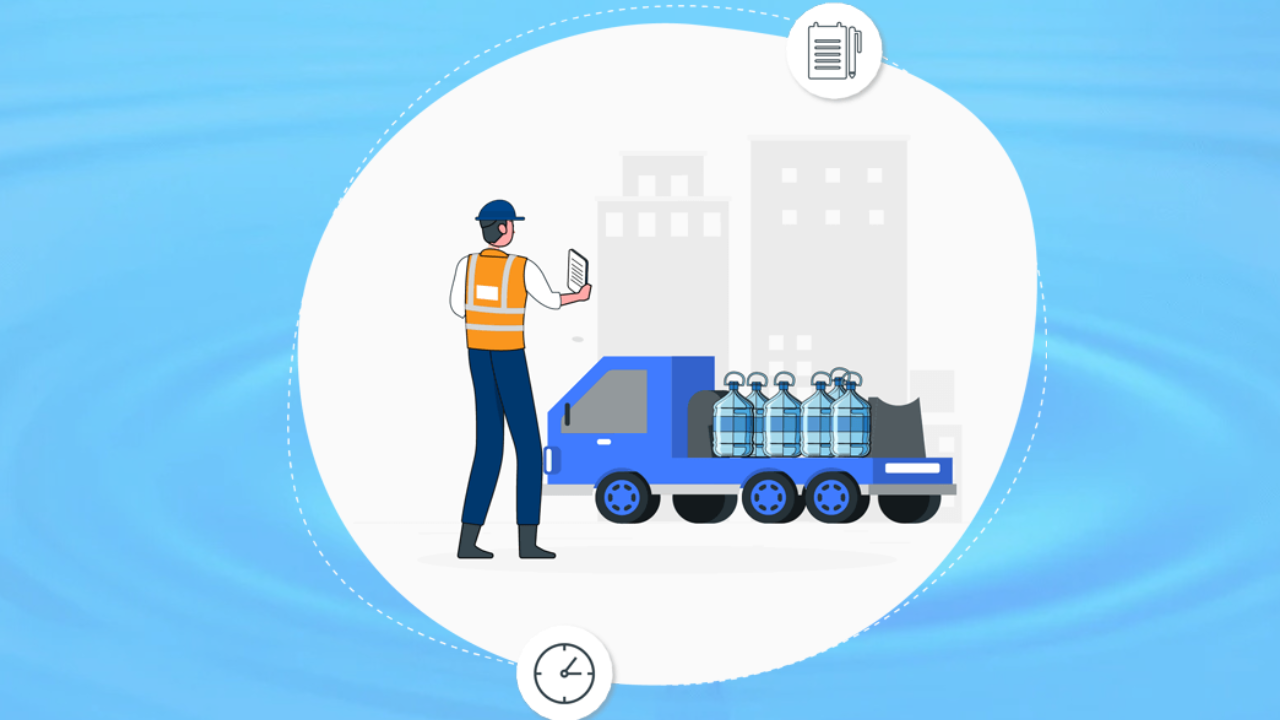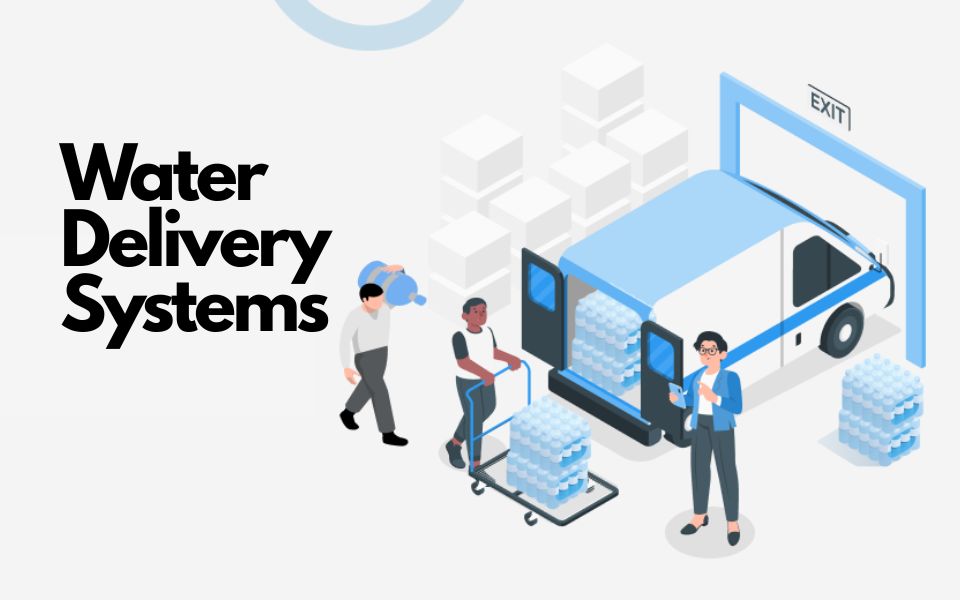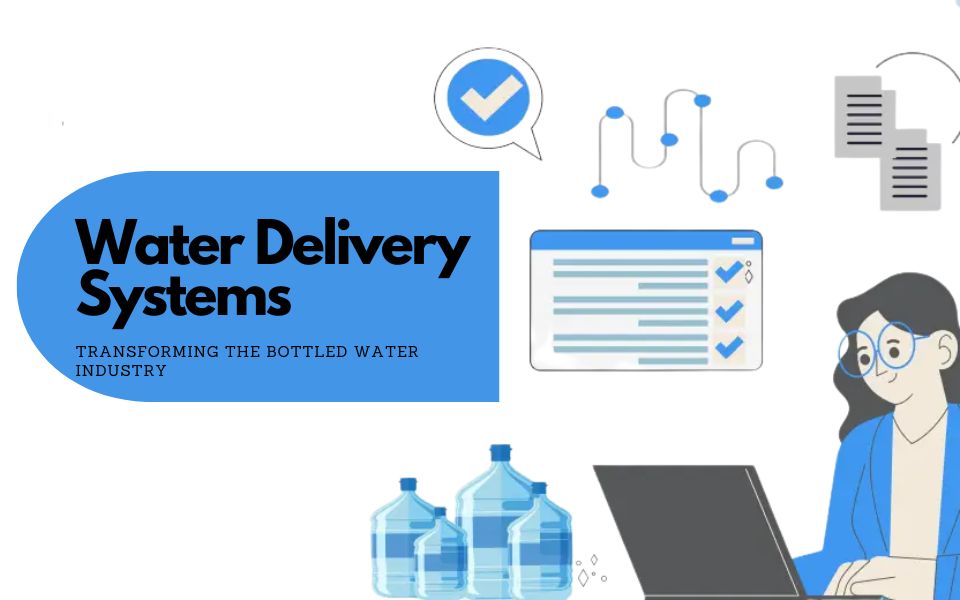How Modern Water Delivery Systems Are Revolutionizing Logistics

Strong 8k brings an ultra-HD IPTV experience to your living room and your pocket.
In a competitive and convenience-driven world, logistics has become the backbone of business success—especially in industries like bottled water delivery. As customers expect faster, more accurate, and more transparent service, traditional delivery methods are no longer enough. That’s where modern water delivery systems come into play.
By integrating advanced technology with smart logistics management, today’s water delivery systems are transforming how businesses handle deliveries. From route optimization to real-time tracking and automated invoicing, these systems bring a new level of efficiency and customer satisfaction.
We explore how water delivery systems are revolutionizing logistics for water suppliers and improving end-to-end operations.
What is a Modern Water Delivery System?
A modern water delivery system is a digital platform that automates and manages the full delivery cycle—order creation, scheduling, routing, dispatch, tracking, and billing. It typically includes features like:
- Route optimization algorithms
- Real-time vehicle and order tracking
- Mobile apps for delivery agents
- Customer portals for easy reordering
- Automated invoicing and payments
- Integrated inventory and stock management
These features are designed to minimize human error, streamline logistics, and enhance the overall customer experience.
1. Smarter Route Optimization
One of the biggest breakthroughs in modern logistics is intelligent route planning. Using AI and GPS, water delivery systems calculate the most efficient delivery routes based on:
- Traffic conditions
- Delivery priorities
- Customer availability windows
- Vehicle capacity
This optimization not only reduces delivery times but also lowers fuel consumption and operational costs. Businesses can handle more deliveries per day with fewer resources.
2. Real-Time Tracking and Visibility
With traditional delivery models, businesses often lose visibility once a vehicle leaves the warehouse. Modern systems change that with real-time GPS tracking.
- For Businesses: Managers can monitor driver locations, check delivery progress, and react quickly to delays or issues.
- For Customers: End-users can track their order status, estimated arrival time, and receive delivery notifications.
This level of transparency improves trust and reduces the number of customer service inquiries.
3. Efficient Order and Inventory Management
Modern water delivery systems link order processing with inventory control. When an order is placed:
- Inventory levels are automatically updated
- Low-stock alerts are triggered
- Reordering processes are streamlined
- This real-time synchronization prevents stockouts, reduces wastage, and ensures that delivery promises are always met.
4. Automation of Billing and Payments
Gone are the days of manual invoicing or cash-only payments. With integrated automated billing, water delivery systems generate and send invoices instantly after delivery. Customers can:
- View and download invoices
- Make payments online
- Set up auto-pay for subscriptions
- This reduces delays in payment collection, improves cash flow, and simplifies account management for both parties.
5. Improved Driver Productivity
- Delivery agents are now equipped with mobile apps that provide:
- Route maps and customer details
- Task checklists and delivery confirmations
- Digital signature capture
- On-the-spot payment processing
This empowers drivers to complete tasks faster and more accurately, reducing the likelihood of failed deliveries or errors.
6. Data-Driven Logistics and Reporting
Modern water delivery platforms come with analytics dashboards that provide real-time data on:
- Delivery success rate
- Average delivery time
- Fuel usage
- Driver performance
- Customer satisfaction metrics
This allows business owners to make data-driven decisions to optimize logistics, reduce costs, and improve service levels.
7. Seamless Customer Experience
Customer satisfaction is at the heart of every successful business. Today’s water delivery systems offer:
- Self-service customer portals
- Subscription-based ordering
- Instant reordering from past purchases
- Real-time updates via SMS or email
All of these features enhance the user experience and lead to higher retention and repeat business.
8. Scalability and Multi-Zone Management
As your business grows, managing multiple delivery zones can become complex. Modern delivery systems allow:
- Multiple location management
- Zone-wise scheduling
- Multi-warehouse inventory sync
- Delivery agent assignments based on geography
This scalability ensures that logistics don’t break down as the business expands.
9. Sustainability in Logistics
Route optimization and better planning mean fewer miles driven and less fuel consumed. By reducing paper-based processes and minimizing waste, these systems also contribute to eco-friendly logistics, aligning your business with sustainability goals.
10. Integration with ERP and CRM
To ensure a seamless operation, water delivery systems integrate with:
- ERP systems for financial and inventory control
- CRM platforms to manage customer relationships
- Accounting software for smooth billing and reconciliation
This eliminates data silos and supports a unified digital ecosystem for your business.
Industries Benefiting from Modern Water Delivery Systems
While bottled water delivery is the primary use case, these systems also benefit:
- Office water suppliers
- Purified water distributors
- Subscription-based beverage delivery businesses
- Industrial and commercial water delivery services
Conclusion
The landscape of water delivery logistics is changing rapidly, and businesses that adapt will gain a significant competitive advantage. Modern water delivery systems are no longer optional—they are critical to scaling operations, increasing efficiency, and delivering a premium customer experience.
By embracing the power of automation, real-time data, and intelligent logistics, your water delivery business can stay ahead of the curve and drive sustainable growth.
Note: IndiBlogHub features both user-submitted and editorial content. We do not verify third-party contributions. Read our Disclaimer and Privacy Policyfor details.







